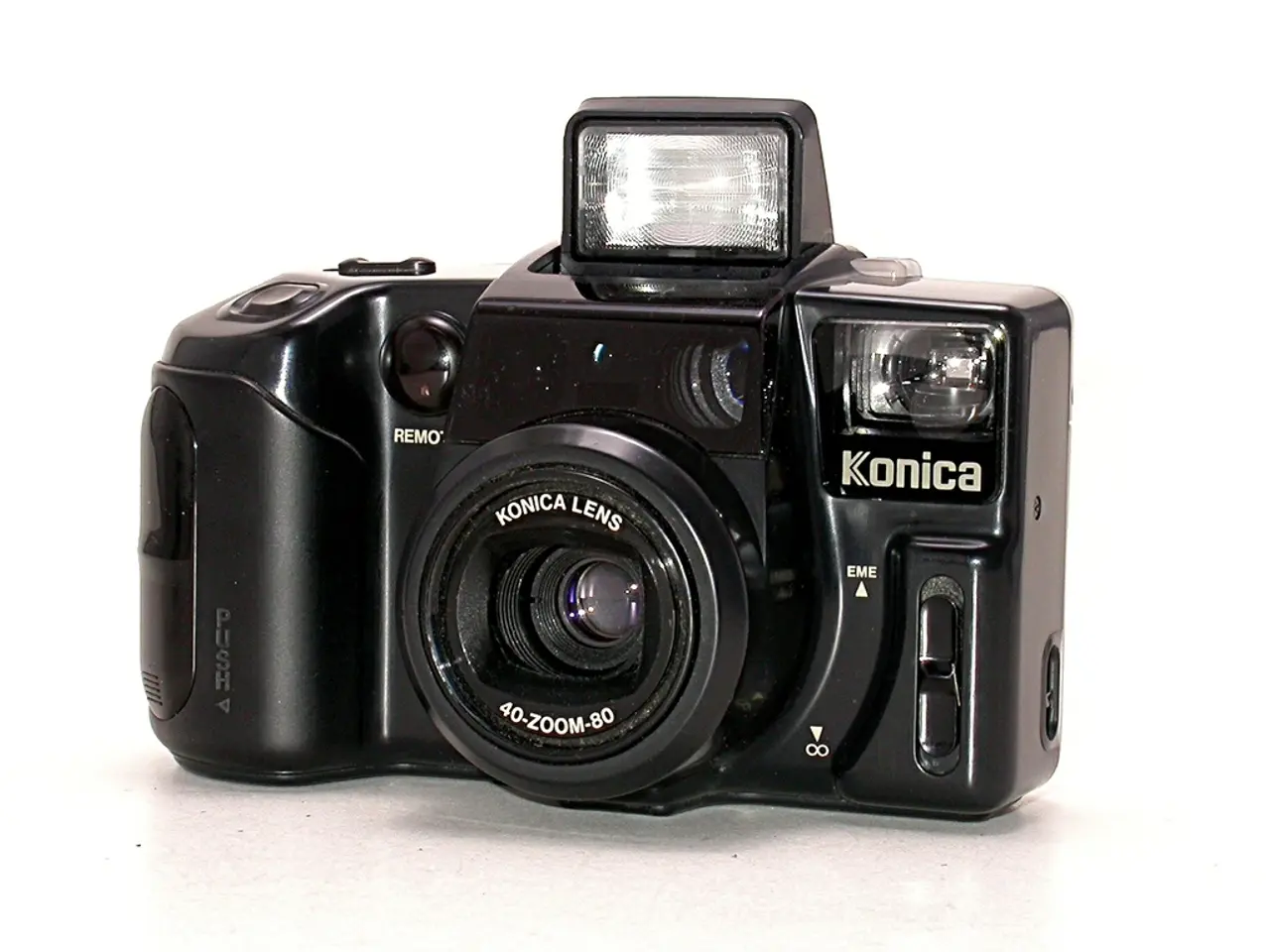Kodak's groundbreaking invention: Unveiling the world's first digital camera
In 1975, a groundbreaking invention was born at Eastman Kodak, marking the beginning of a new era in photography. American electrical engineer Steven Sasson, then working at the company, created the first self-contained, handheld digital camera [1][2].
Sasson's prototype was a portable, battery-powered device that recorded black-and-white images digitally onto a cassette tape using a Fairchild CCD image sensor. Though earlier devices captured digital images, Sasson's camera was the first of its kind to be truly handheld [1]. Weighing about 8 pounds and boasting a resolution of 100x100 pixels (0.01 megapixels), it took approximately 23 seconds to record each image [1].
Kodak filed a patent for this invention, called the "electronic still camera," in 1977, listing both Sasson and Gareth Lloyd as inventors [1]. However, by 1995, digital pioneers like Sasson had been eclipsed by companies such as Sony, Apple, and Canon.
Each tape in the first digital camera could store up to 30 images. Sasson estimated that it might take 20 years to produce a consumer camera according to his interpretation of Moore's Law [3]. The first digital picture produced by Sasson was in black and white. To produce a digital picture in color whose quality matched that of a print from a 110 film negative, Sasson determined that he would need 2 million pixels [3].
The image quality of Sasson's first digital camera was poor and did not pose a threat to the quality of pictures produced by 35mm film or 110 snapshot cameras of the time. Nevertheless, Sasson's invention paved the way for the digital revolution in photography.
In 2009, Sasson was awarded the American National Medal of Technology and Development. In 2012, he received the British Royal Photographic Society's Progress Medal. Unfortunately, the same year also saw Eastman Kodak filing for bankruptcy [4].
The first digital camera developed by Sasson weighed 3.6 kilograms, used a single-speed electronic shutter of 1/20sec, and took black and white images measuring 100×100 pixels [5]. The first digital picture taken by Sasson's camera in December 1975 no longer exists. Another digital camera, the Cyclops, was announced by a company called Cromemco in 1975. However, unlike Sasson's camera, the Cyclops had no built-in storage device [6].
The creation of the first digital camera can be traced back to the work of William Boyle and George E Smith, who developed the Charge Bubble Device in 1969. This device, which could be injected with electronic data derived from the electric current generated when light hit certain metals, would later lie at the heart of most digital cameras [7]. Albert Einstein's proposal that light could behave like particles and transfer energy to electrons in certain metals, leading to the generation of a weak electric current, also played a significant role in the development of digital cameras [8].
References:
- First Digital Camera
- Steven Sasson
- Digital Camera History
- Eastman Kodak Bankruptcy
- First Digital Camera Specifications
- Cyclops Digital Camera
- Charge Bubble Device
- Einstein–Photons
Technology directly influenced the evolution of photography, as the first self-contained, handheld digital camera was invented by Steven Sasson in 1975. This groundbreaking gadget recorded black-and-white images digitally, marking the initial steps towards modern digital photography.




